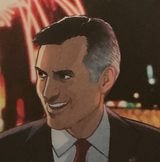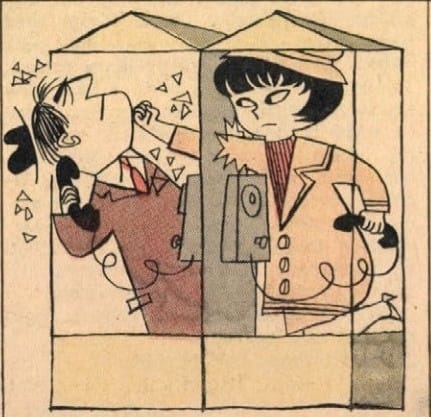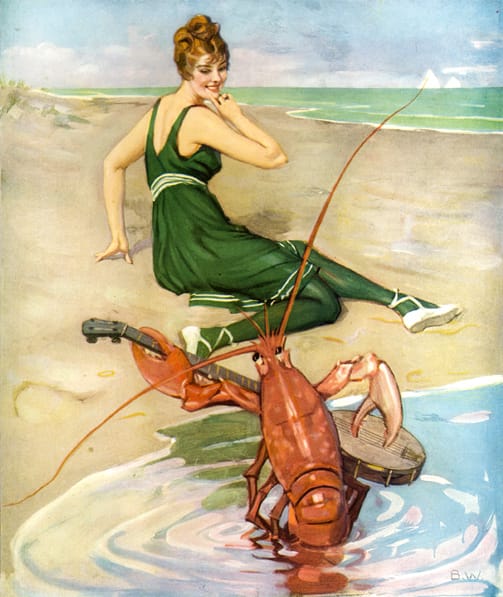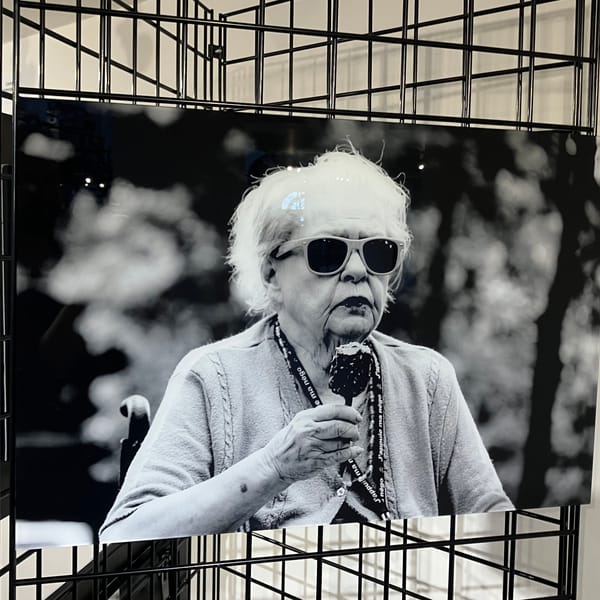Four Republiques Deep and He Gives You This Look

Two things that Paris impresses upon you immediately is that it is (1) an old city and (2) a world city.
The former I intend to talk about at some length next post, but the latter becomes apparent just walking down the street. On your way elsewhere, you will find yourself walking through a square with a statue of George Washington or a park dedicated to Santiago, Chile:
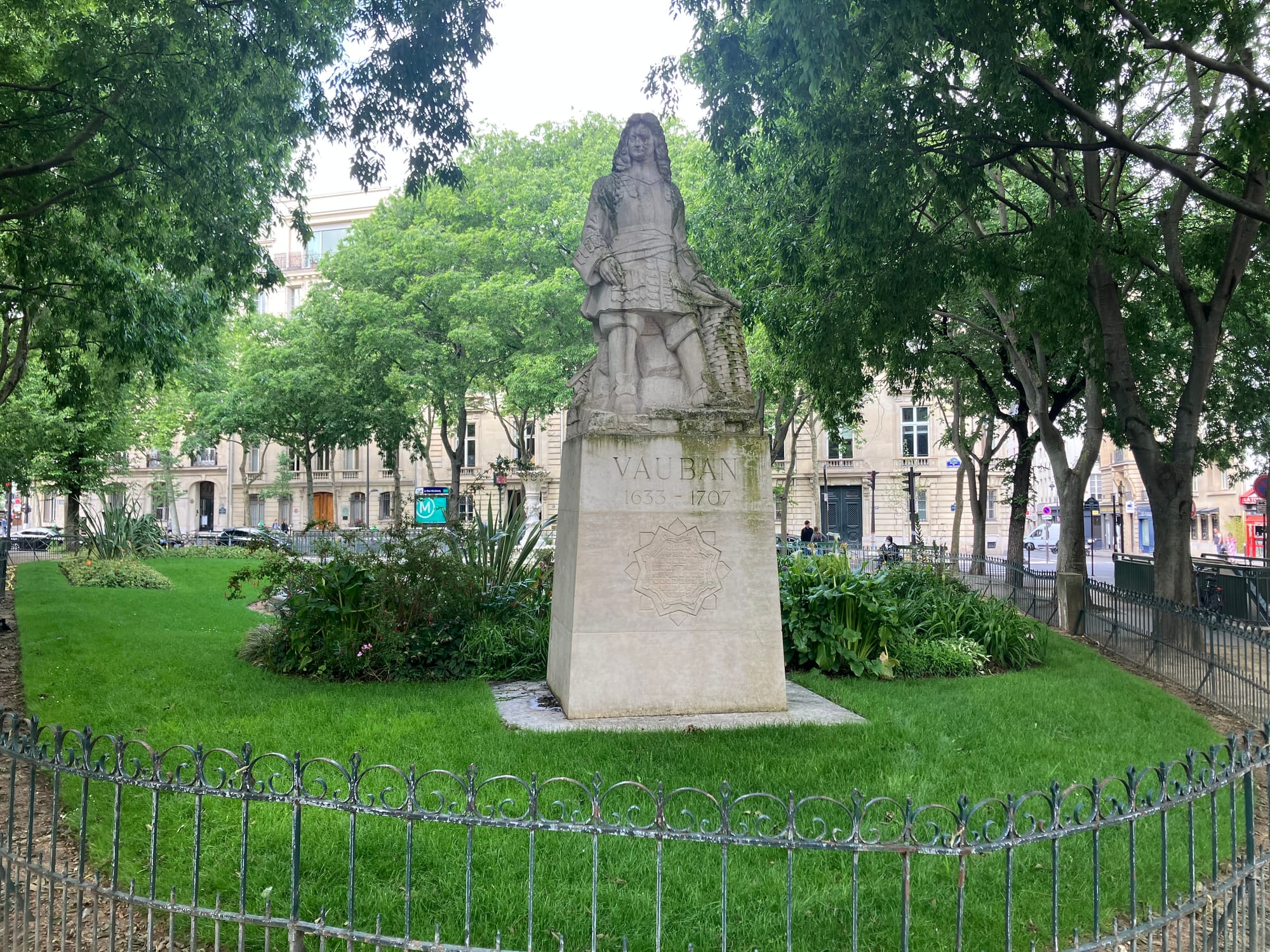
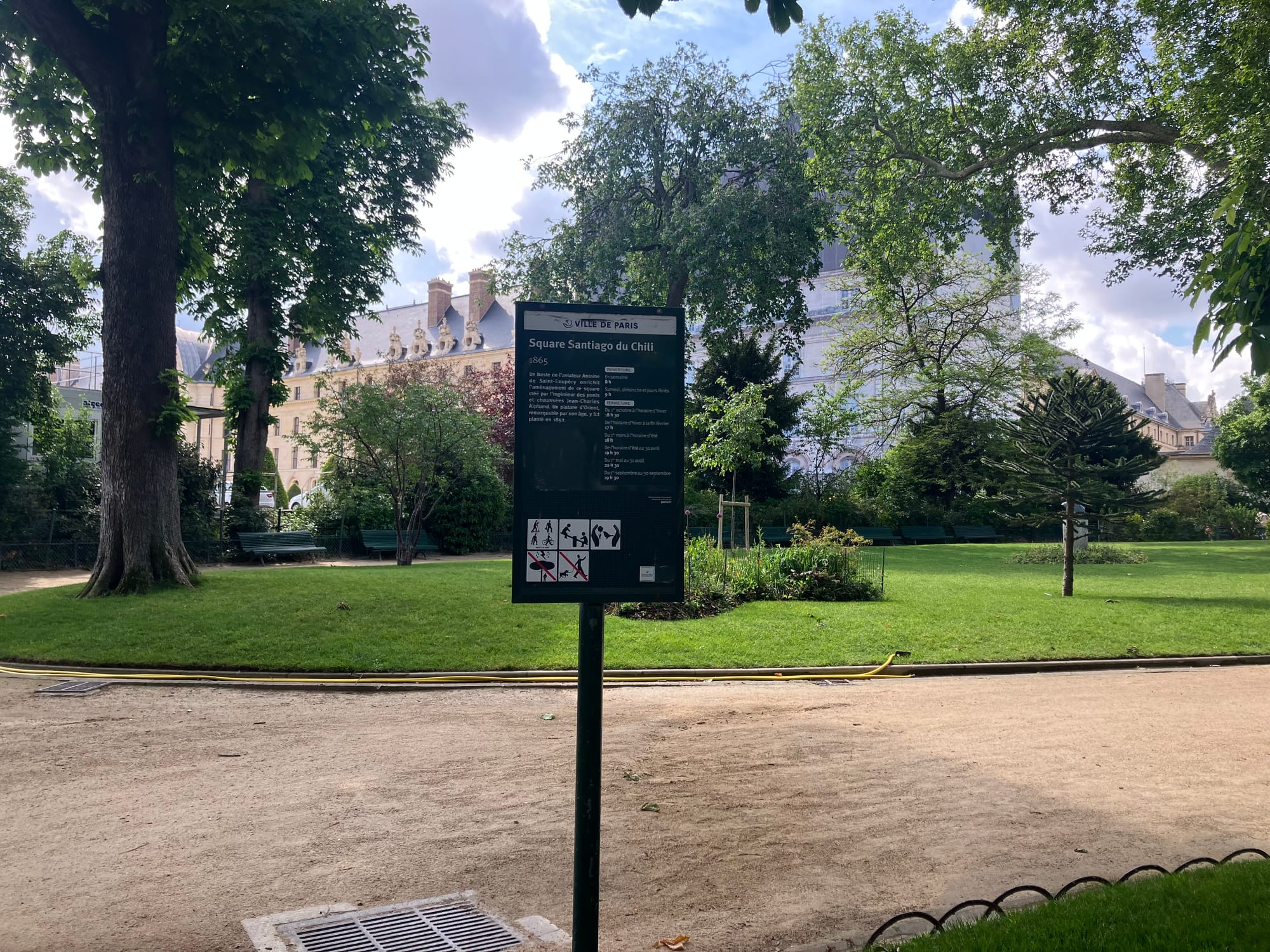

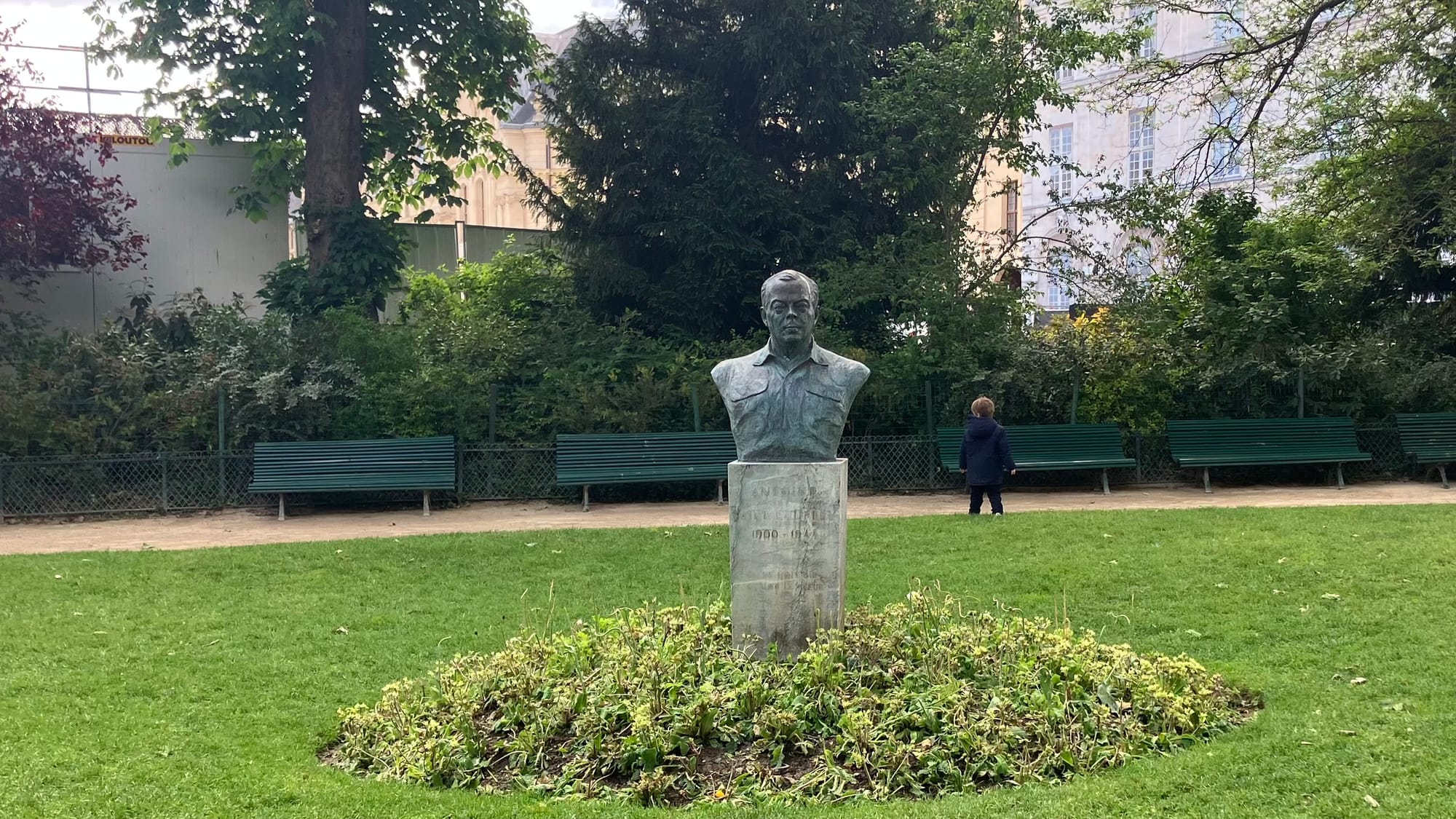
The Chilian ambassador under Salvador Allende decided to stay in Paris rather than return to his home country to almost certain imprisonment and torture under Pinochet, and the French dedicated this lovely park to him and the people of Chile. I assume they kept the statue of Vauban there because it looks pretty heavy.
Further, some 20% of the population was born outside of France [[1]] - a substantial portion from Morocco and Algeria.

Speaking of Algeria, it features prominently in the life of the subject of the current dedicated temporary exhibit at the closest museum to our hotel. The museum: the Musée de l’Armée des Invalides - an army history museum and former home for aged/disabled (“invalide”) soldiers.

The subject: Charles de Gaulle.
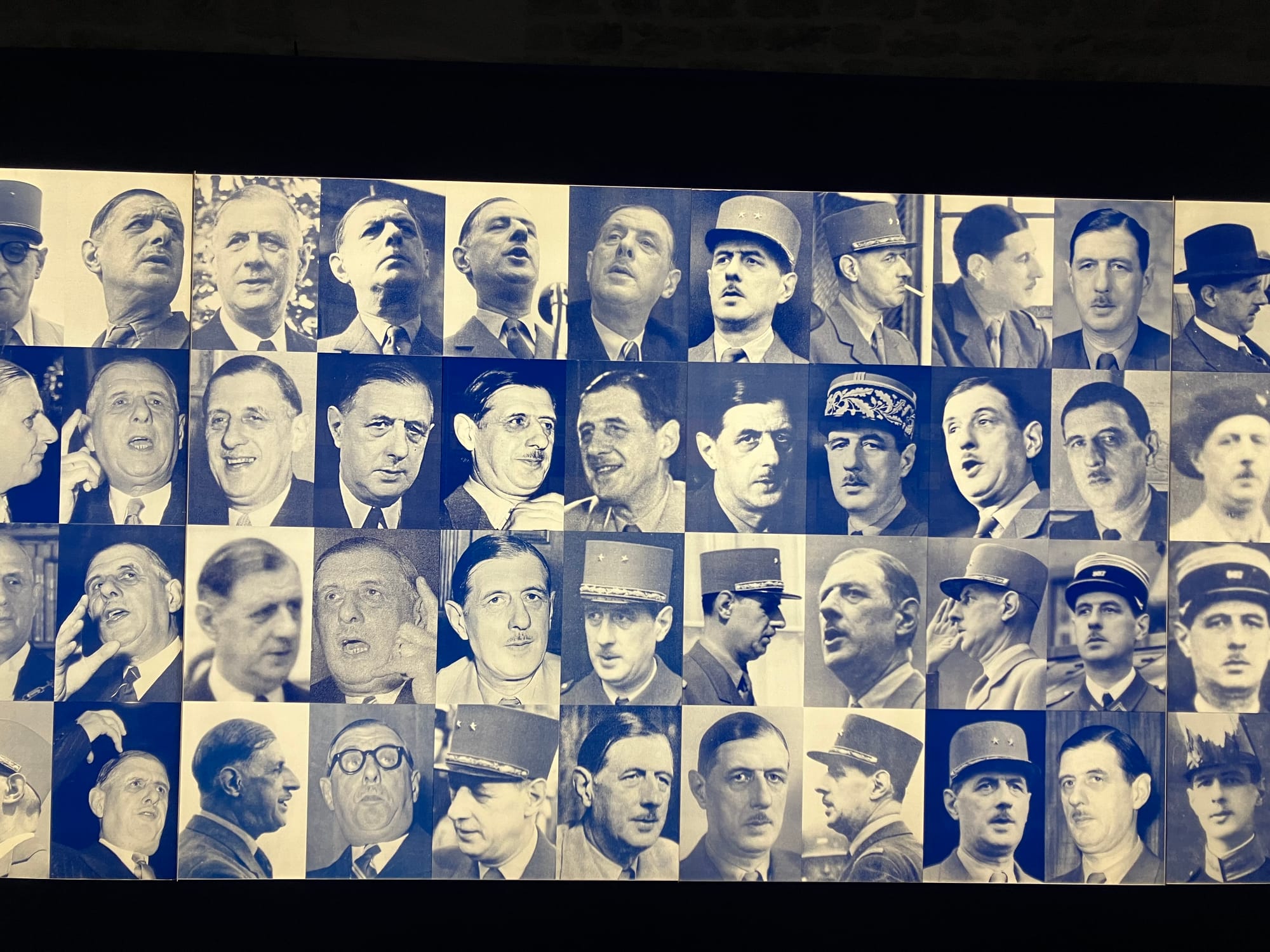
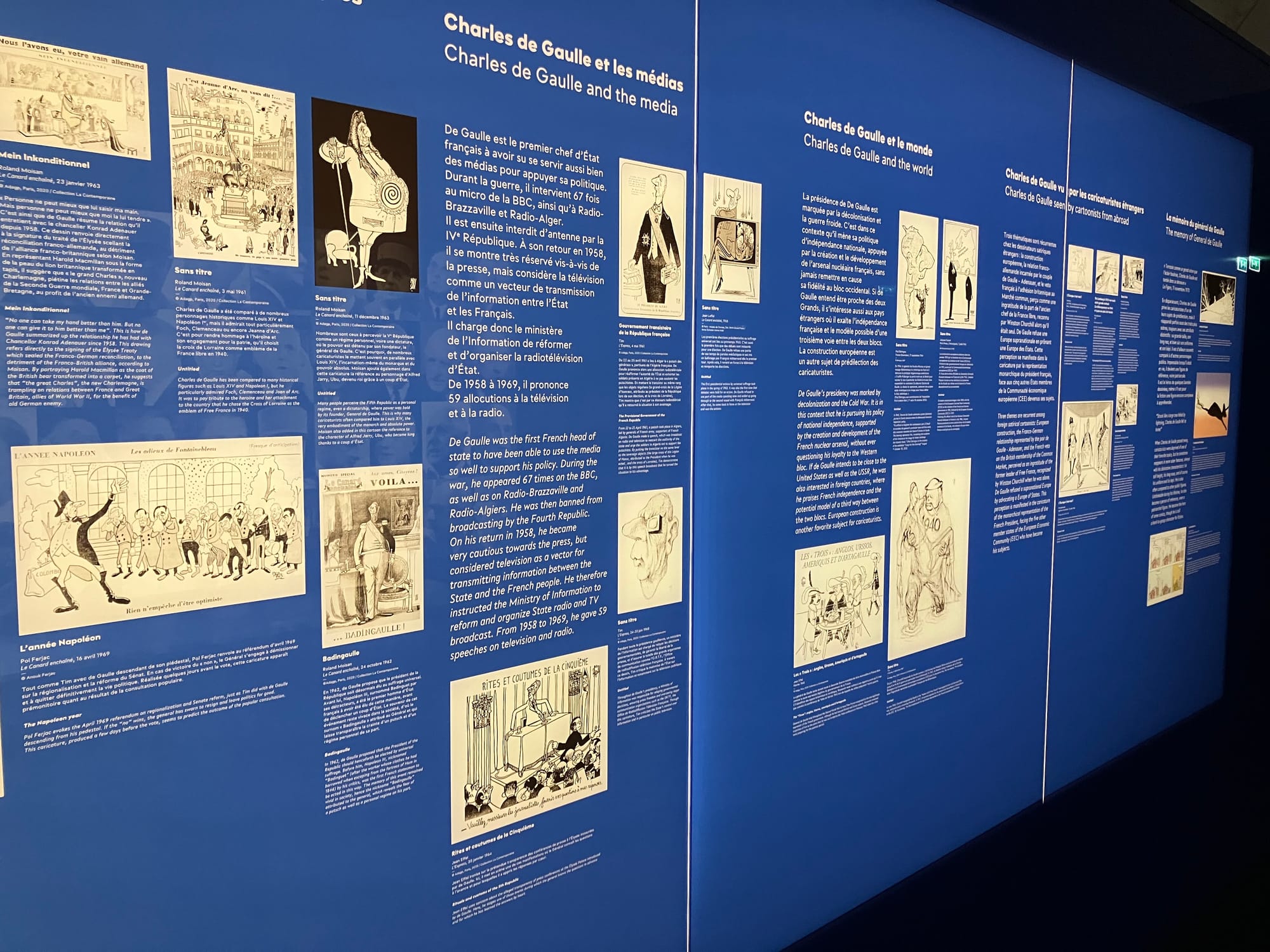
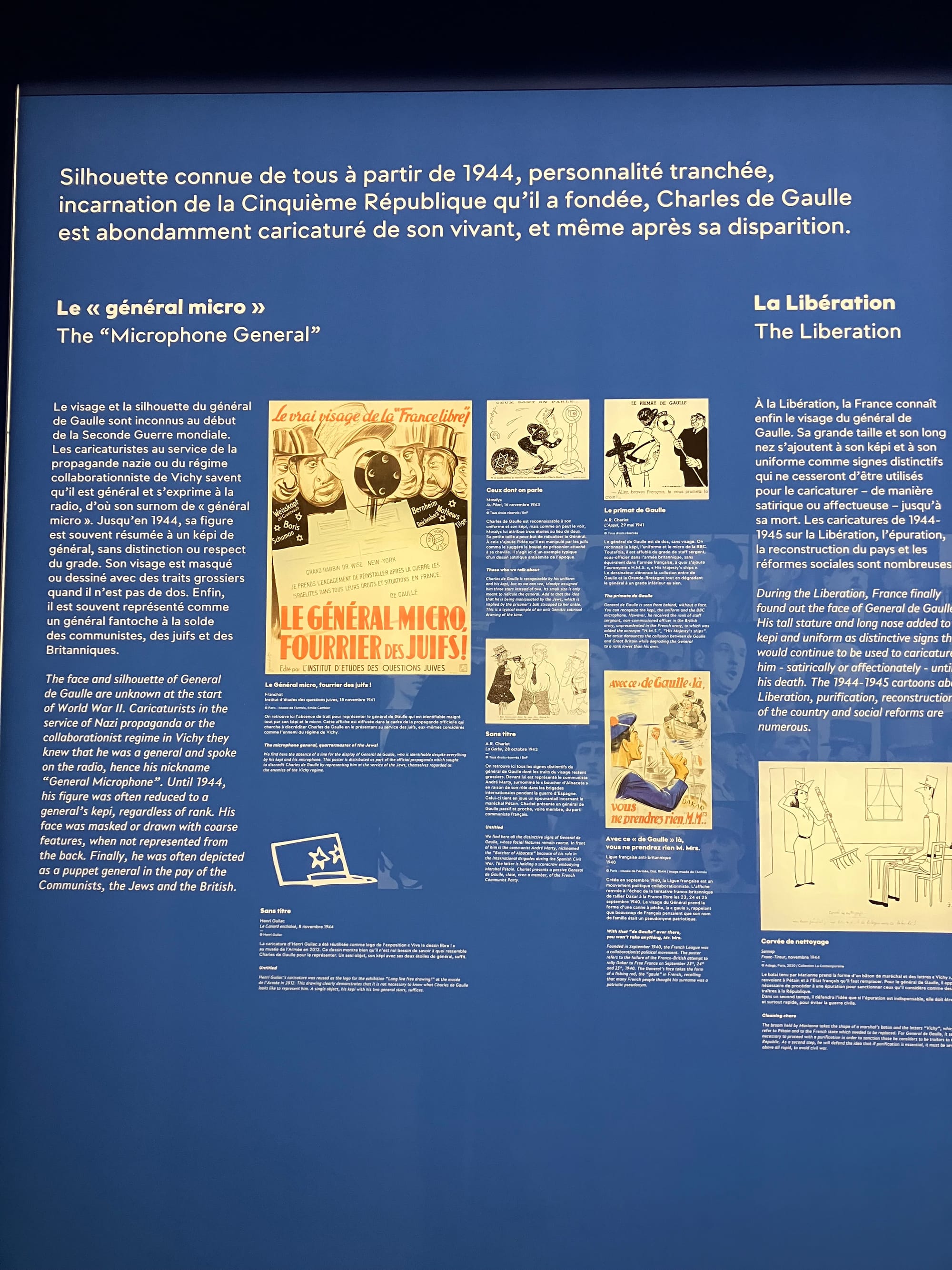
Huge fan of the intro hallway to the exhibit; you are flanked on one side but a bunch of photos of the man, and on the other, you see a huge number of political cartoons that range from trying to discredit him (by the Nazis), comically questioning his dedication to republicanism (by the left during his presidency), to dealing with his loss (depicted most famously as an enormous tree having been felled).
France has an insanely long history at war and considerable government resources dedicated to art and culture so this thing was sprawling - far beyond my capacity to get to all of it. I am likely to talk about the sections detailing 1500-1900 when speaking more about how Paris became the city it is - given the personalities that most shaped it lived in that time - but de Gaulle is a perfect subject for talking about French history from 1900-1970. [[2]]
Charles de Gaulle was wounded like 5 times in WWI. He spent the interwar period trying to convince the French armed forces to actually use tanks correctly and, rather than being too bitter about it when he was proven correct, he eventually led the Free French forces after some expert political maneuvering and quite a lot of help from Winston Churchill (Roosevelt was never a fan and shut him out of Yalta).
The more interesting part of his story, in my mind, was his return to power in 1958. France has had five (5) Republics [[3]] and the current one is de Gaulle’s baby. He wanted a strong presidential system in 1946 and quit because he didn’t get it. [[4]]
But by 1958 France was in a state of terminal crisis caused by the conflict in Algeria with the substantial population of European settlers (the pied-noirs) feeling abandoned by the central government in the face of a violent movement for Algerian national independence (Front de libération nationale or FLN). The French Army seized power in Algeria, set itself up in Corsica, and had a plan to invade Paris and install Charles de Gaulle (who was vigorously opposing their actions). The government effectively capitulated and de Gaulle assumed power, wrote a new constitution, and a referendum saw it win with 82% of the country voting in favor.

It is sometimes hard to get a firm read on de Gaulle. Certainly a reliable anti-communist, but still managed to piss off Washington by developing an independent nuclear weapons program, recognizing the People’s Republic of China, and telling the US to leave Vietnam. He insisted on French autonomy but was instrumental in getting the EU off the ground. He got France out of Algeria but continued to fuck around with various African nations, supporting a breakaway Nigerian state.
What is also interesting is how he lost power, which was the result of the worldwide social turmoil experienced in the 1960s. The exhibit, I think, did this particularly well.
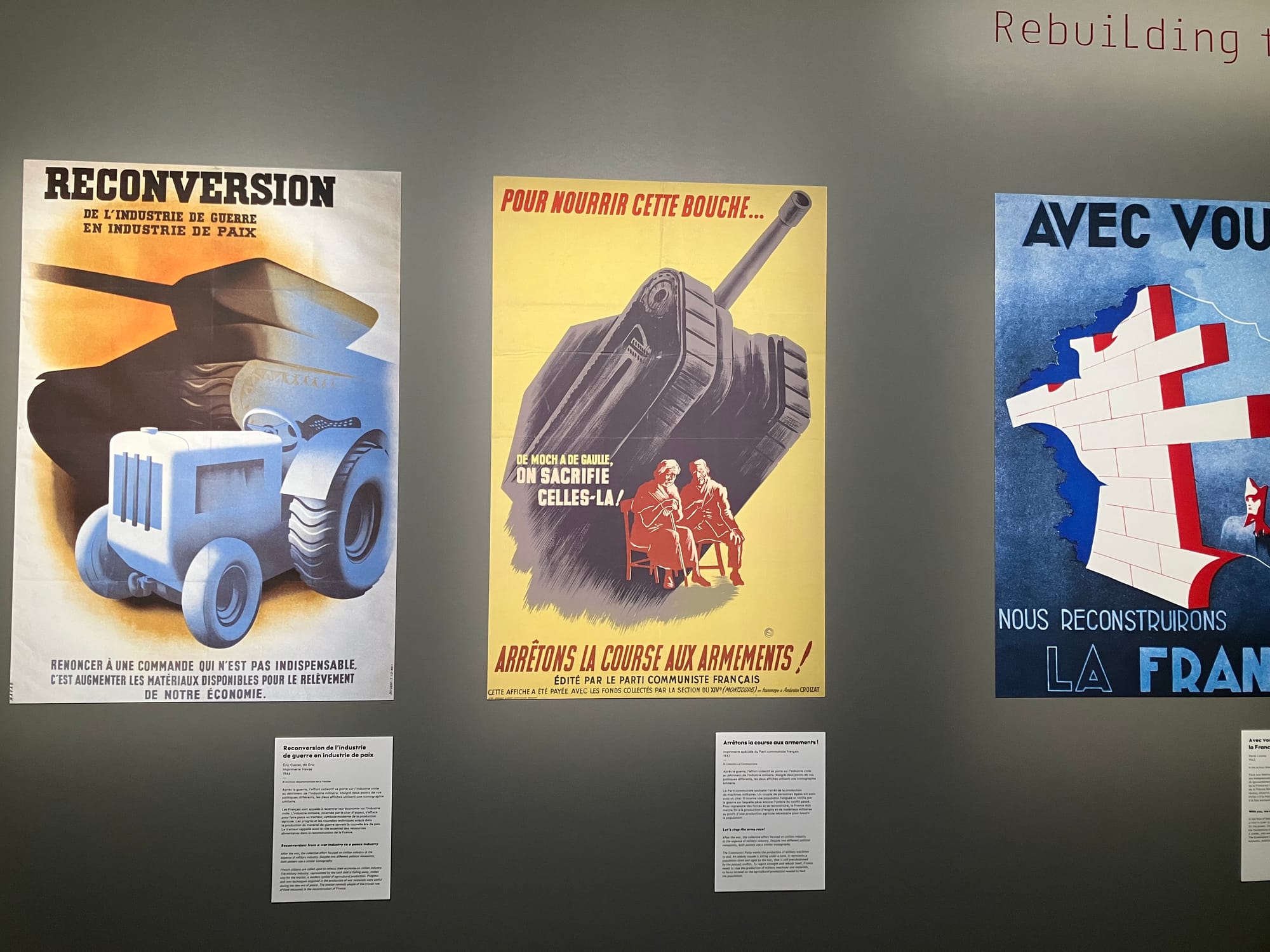
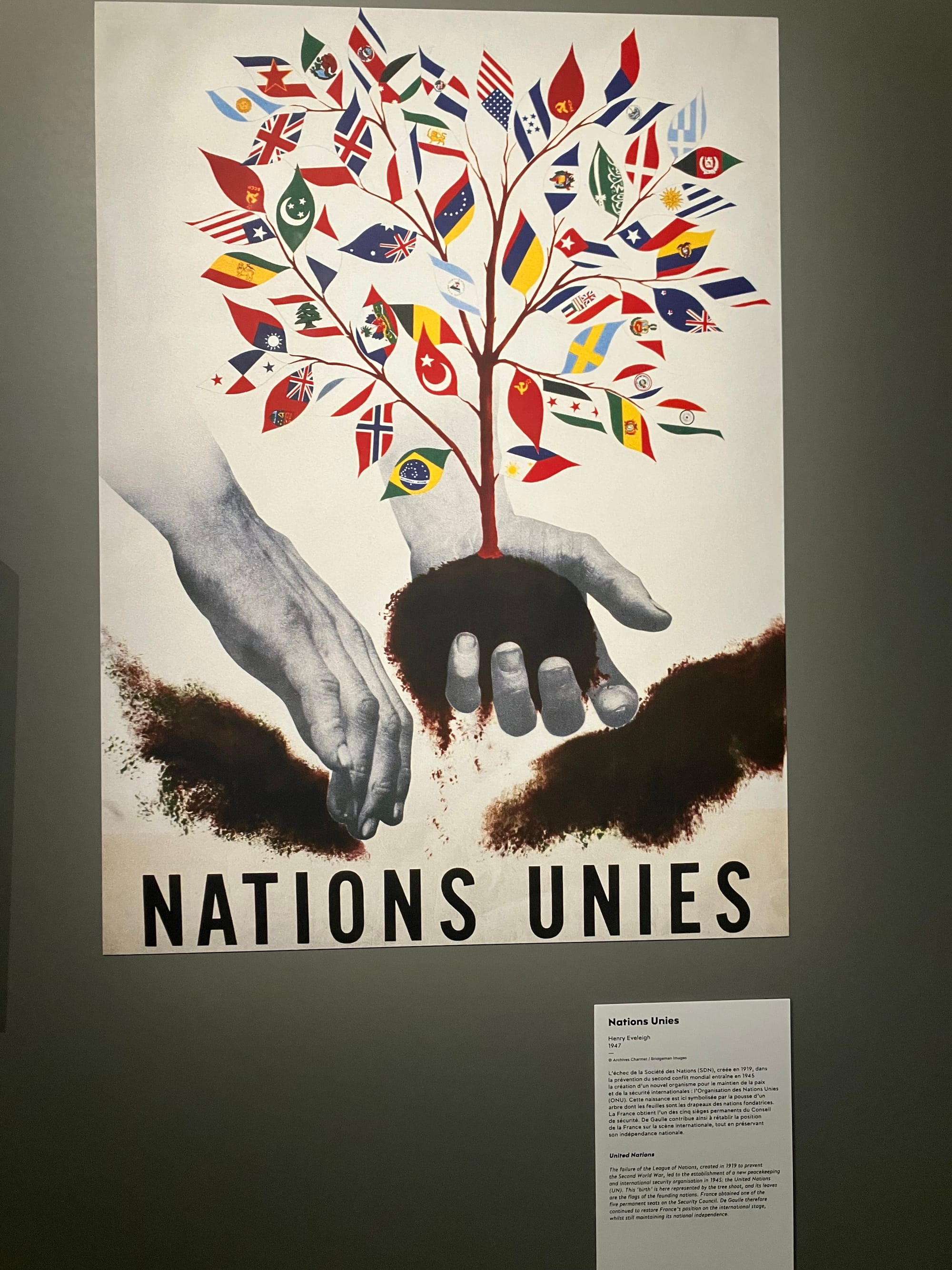
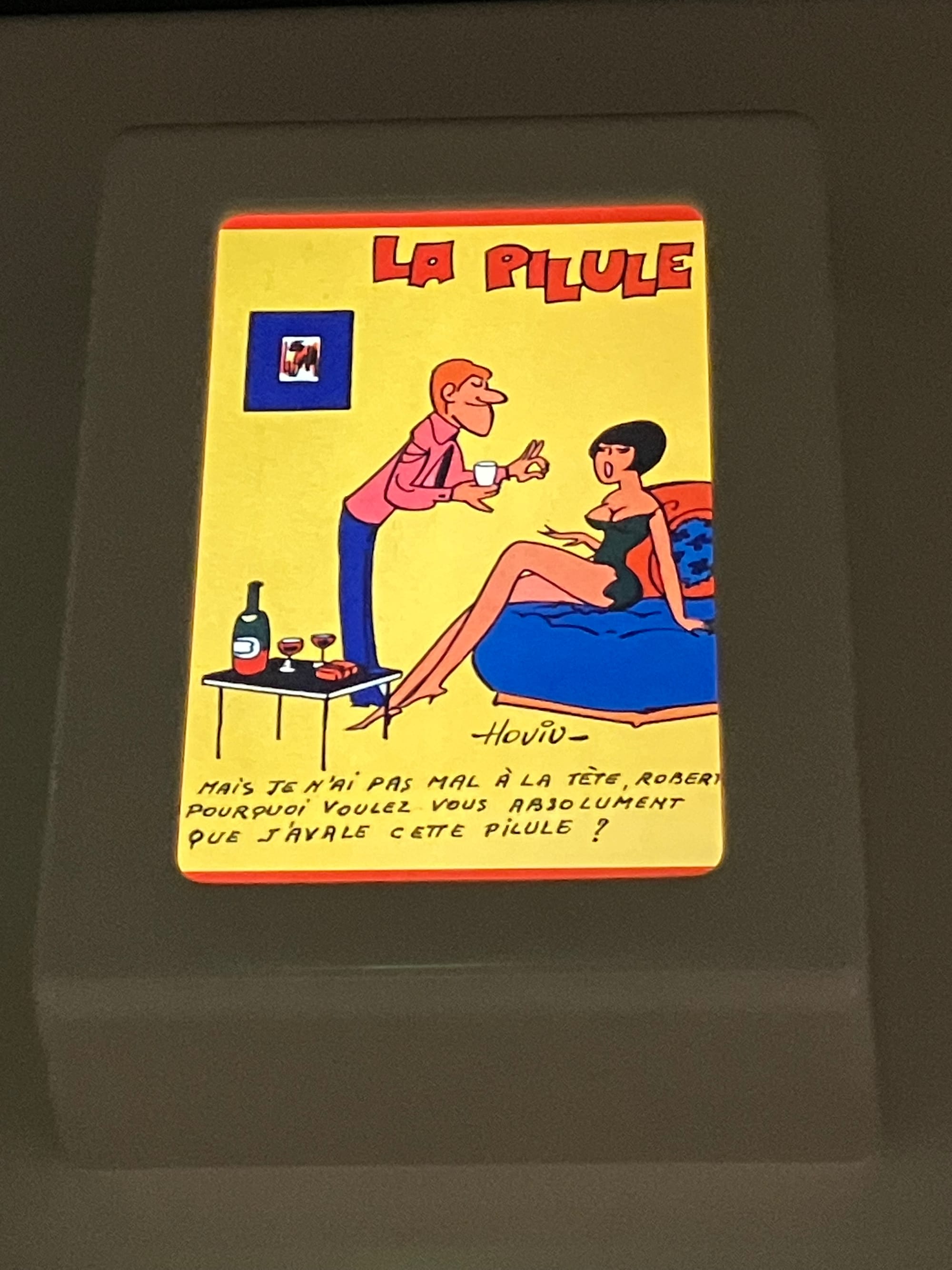

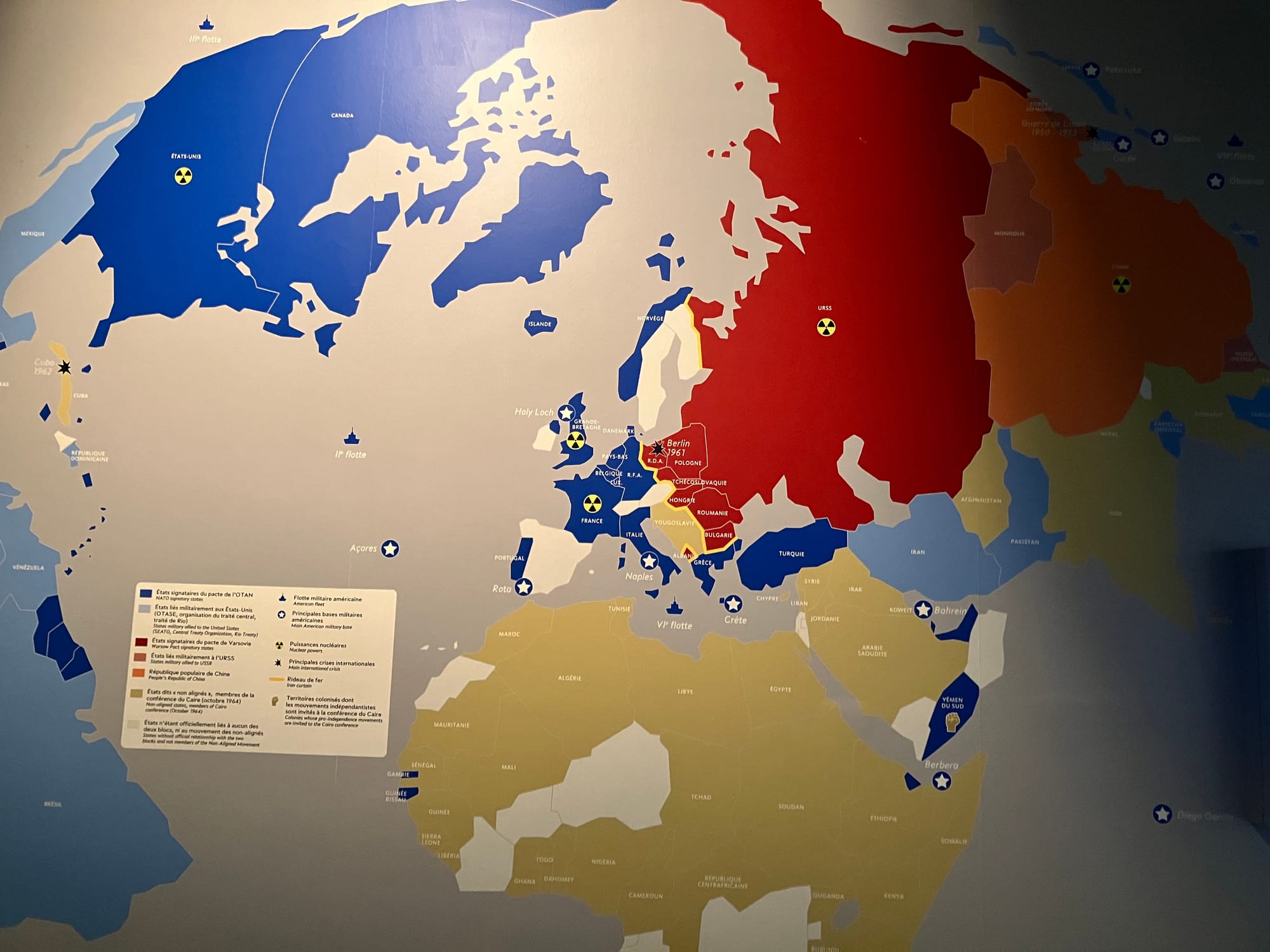
I couldn’t hope to capture everything here, but I especially like the swords-into-plowshares post-war propaganda and the cartoons about contraception that largely featured men demanding it or, in the above, slipping it into a woman’s drink? Congrats on somehow making a landmark mechanism of improving female bodily autonomy problematic.
That de Gaulle was taken down by forces he didn’t understand and couldn’t relate to - a not uncommon problem for strong executives [[5]] - is something, remarkably, mentioned explicitly in the exhibit. The student movement-turned-general-strike of May 68 failed to bring on the revolution promoted by its original cohort, but in addition to concessions on working conditions and wages, it forced the resignation of de Gaulle.

That he died almost instantly after resigning shouldn’t come as a great shock, given he was already 79. I think we can all agree that’s way too old to be in charge of anything, much less a nation.
[[1]]: This is a lot, but still pales in comparison to Montréal‘s 40% (!)
[[2]]: There were basically only two decades where he wasn’t in the thick of it - 1900-10 (still a child) and 1946-58 (the 4th Republic)
[[3]]: There have been some efforts to form a 6th Republic, which I frankly see increasingly likely to gather steam given the current combination of idiocy and horrors being made visible by the republic across the Atlantic with an increasingly powerful presidency
[[4]]: And specifically his extreme reluctance to work with any member of the Communist party, which he regarded as a political arm of the USSR
[[5]]: Charles I of England is the classic exemplar of this, but it’s safe to say his fall was more extreme
